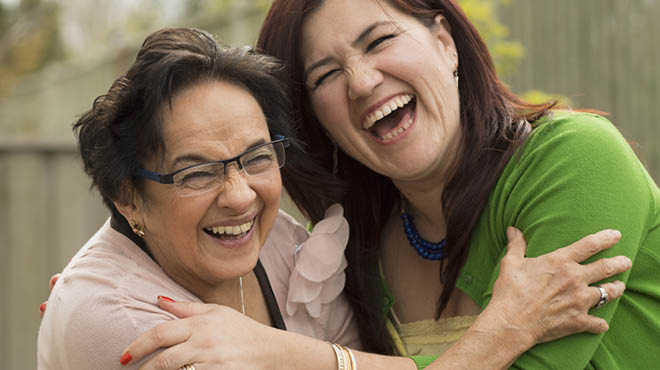Recent Posts
-

-
 Patient StoriesA lifesaver saved: An EMS veteran’s journey from rescue to recoveryNovember 14, 2025
Patient StoriesA lifesaver saved: An EMS veteran’s journey from rescue to recoveryNovember 14, 2025 -

Don't stress over urinary incontinence
By Mayo Clinic staff
Stress urinary incontinence (SUI) is the unintentional loss of urine during an activity that causes increased pressure. The most common activities that cause SUI are running, jumping, laughing and coughing. According to the U.S. Food and Drug Administration, it is the most common form of incontinence for women. Although SUI can affect women of all ages, symptoms are most common in women after vaginal delivery, surgery or during menopause.
Cause and effect
SUI occurs when the urethra falls or descends due to weakening muscles. The weakened muscles are unable to keep the urethra from falling during activity of increased pressure, including exercise and coughing.
SUI can cause significant burden, distress and embarrassment for women. Many women avoid normal activities and exercise due to loss of urine. Conditions such as urinary tract infections, obesity, chronic cough, diabetes and certain medications can make it worse. However, treatment of other chronic conditions can often decrease symptoms of SUI.
Treatment options
Nonsurgical treatment options may include a combination of behavioral modifications and supportive techniques and treatments, including:
- Avoiding certain foods and drinks.
Alcohol, caffeinated soda, spicy and citrus foods can irritate the bladder. Consider eliminating the foods which may trigger SUI. - Losing weight.
Some women see an improvement in symptoms by losing at little as 10 lbs. Before starting a weight loss program, it is a good idea to consult with your health care provider. - Exercising pelvic floor muscles by doing Kegel exercises on a regular basis.
Kegel exercises strengthen the pelvic and urinary sphincter muscles. - Exploring biofeedback.
Biofeedback is a technique that helps you focus on controlling your body’s functions by receiving feedback from electrical sensors. In essence, biofeedback gives you the power to use your thoughts to control your body.
Another treatment option is using a vaginal pessary, which is a small ring that is placed in the vagina to support the bladder and urethra. This is a removable device that helps support the bladder base to prevent urine leakage.
When nonsurgical treatments are unsuccessful, surgery may be considered. One surgical option is a tension-free vaginal tape, or TVT, which is an outpatient procedure performed by placing a sling under the urethra.
It is important to meet with your provider to discuss all surgical and nonsurgical options. He or she will perform a pelvic exam, review your medical conditions and medications, and may perform lab tests. You and your provider should discuss the results of any tests and decide how they impact your treatment strategy.
Stress urinary incontinence doesn’t have to hinder your lifestyle. With the right treatment, you'll likely be able to manage incontinence and improve your overall well-being.


